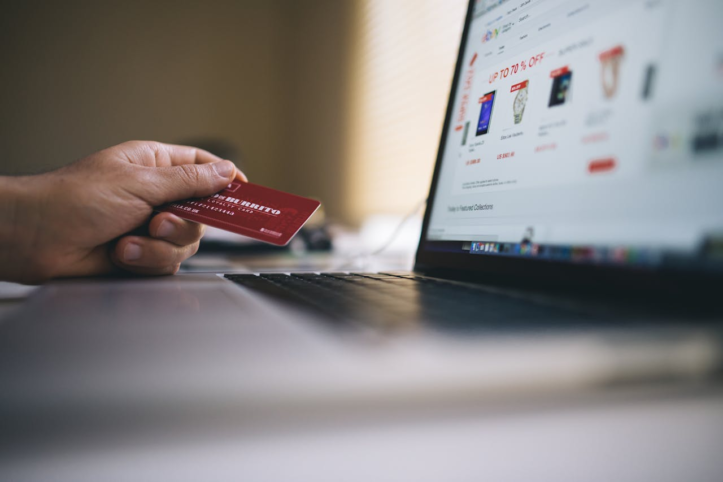Cross-selling VS up-selling: Comparison 2025
Up-selling and cross-selling are two distinct but complementary sales tactics. They are both designed to help you increase revenue from your e-commerce shop. However, what are the main differences between these two strategies? And how can you make the best use of them? Below we bring you an exhaustive comparison between up-selling and cross-selling.
What is up-selling
Up-selling is a sales technique that involves encouraging customers to buy a more expensive version than their initial choice.
📌 For example: someone goes to Zalando to buy running glasses. They find a product by CHPO for £30. They scroll down to the “Our suggestions” tab where they find a pair by Oakley for £150. They prefer the colour, design and features. So, they decide to buy the Oakley glasses.
In this scenario, Zalando has made an up-sale. The platform has added more high-end expensive products below an affordable product. This sales technique not only helps to incite customers to spend more, but to also show them all available options.
Even if customers don’t intend to buy a pair by a known brand, they might allow themselves to be tempted by bonus functionalities or more advanced technical features.
What is cross-selling?
Cross-selling aims to offer products that are complementary to the main purchase.
📌 For example: let’s look again at our athlete who goes to Zalando to buy running glasses. Underneath the Oakley glasses, they see a range of products described as “The winning combo”. They see a hydration vest, a running cap and several water bottles in the same colour as their glasses. This makes them think they’ve always wanted to try a hydration vest when they’re trail running. Without a second thought, they add it to the basket and go to the check-out.
Here, Zalando has made a successful cross-sale. They facilitated the sale of a hydration vest by drawing attention to a range of items that naturally complement the initial product.
Cross-selling isn’t just a way to increase the value of the average customer’s basket. Like up-selling, it’s also an excellent lever to improve the purchasing experience by informing customers about the options open to them.
The differences between up-selling and cross-selling
Up-selling and cross-selling both help to increase revenue for e-sellers. However, they don’t have the same objective and don’t always occur at the same time.
Objective
In the case of up-selling, you offer the customer a better or more costly version of the product they’re planning to buy. You can also suggest they add premium options.
📌 For example: when buying a smartphone on Backmarket, the company may offer the customer a product from the same brand but with more storage.
As for cross-selling, it involves suggesting products that are complementary to the main purchase. The aim is to increase the value of the average basket by presenting items that go well together.
📌 For example: when buying a smartphone on Backmarket, the brand might suggest the purchase of a case or wireless earphones.
Type of product suggested
In the case of up-selling, you suggest a better version of the same product, whereas in cross-selling, you offer complementary items. The type of product sold is therefore one of the main differences between cross-selling and up-selling.
The right time
Lastly, these two sales strategies won’t necessarily be used at the same time.
Up-selling often takes place on the product page, before being added to the basket.
As for cross-selling, it can take place when a product is added to the basket, at payment or after the purchase, by email. It’s also possible, as Zalando does, to offer customers accessories or products related to the product file.
When should each sales strategy be used?
When should up-selling be used?
Up-selling usually happens when a customer shows an interest in a product or service, so on the product page, just below the description.
🚨
The product suggested must offer real added value to the customer. It must meet their needs and not exceed more than 25% of their initial budget, to remain attractive.
When should cross-selling be used?
Cross-selling can be used at the time of purchase.
📌 For example: when a user adds a product to their basket, a pop-up window appears and suggests four or five items directly related to their purchase.
This sales technique can also prove to be effective after the sale. As an e-seller, you can send an order summary suggesting additional items that are likely to interest the customer, or an email dedicated to cross-selling, a few days after the first order.
Lastly, you can personalise the customer’s buying experience via AI, by highlighting products at optimum times, depending on the preferences of each customer.
To do this, you need to analyse users’ behaviour on your site, their buying history and the retention (or loyalty) rate. This will enable you to target the customers who are the most receptive to cross-selling, and the best times to do so.
Cross-selling VS up-selling: what you need to remember
Cross-selling and up-selling are two powerful tools for maximising revenue from your online shop.
However, whether you go for up-selling, cross-selling, or both – above all, you need to do it it for your customers. Recommend products that are truly relevant and don’t make the mistake of offering random items, particularly in the case of cross-selling.
In addition, it’s good to remember that not all your customers will be receptive to these sales strategies. Some will be easily convinced by the need to buy a premium product or complementary item. Others will prefer not to waste time on your suggestions and will go directly to the next step. And that’s a good thing!
To sum up, cross-selling and up-selling are two sides of the same coin. They should be combined for maximum effectiveness.
Do you want to launch a new product but don’t know how to go about it? Check out our complete guide to launching a product online!






